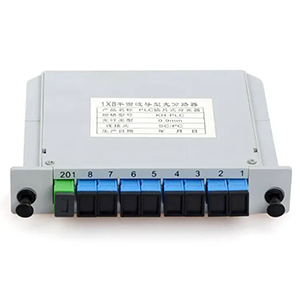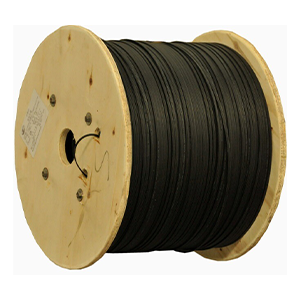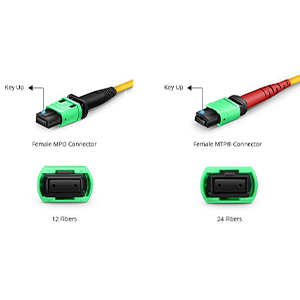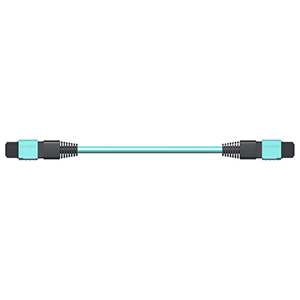Hello everyone! Today I want to discuss two common network cables with you-Cat5e and Cat5. In modern society, network connections have become an indispensable part of our lives and work, and choosing the right network cable is crucial for smooth data transmission. In this article, I will compare and explain the differences between Cat5e and Cat5, and introduce their respective application scenarios to help you make a wise choice.
Network cable basics review
Network cables are the physical media used to transmit data within a computer network. They carry digital signals that transmit data from one device to another, such as computers, routers, switches, etc. The role of network cables is to provide reliable data transmission channels, connect network devices, and realize data transmission and communication.
The basic principle of network cables is to use electrical or optical signals to transmit data in the transmission medium. Different types of network cables use different transmission media and signal transmission methods. Common transmission media include metallic wires (such as copper wire) and optical fibers. Copper cables use electrical signals to transmit data through wires, while fiber optic cables use optical signals to transmit data through optical fibers.
The importance of network cables in data transmission is self-evident. They directly affect the speed, reliability and bandwidth of the network. Good network cables can provide stable signal transmission, reduce interference and signal attenuation, and ensure high-speed data transmission and low latency. The quality and performance of network cables are crucial to building an efficient network infrastructure and meeting the needs of different applications.
Common types of network cables include Twisted Pair and fiber optic cable. Among them, twisted pair cable (such as Cat5e and Cat5) is the most common and widely used type.
Cat5e (Category 5e) cable is a copper twisted pair cable commonly used in Ethernet networks. It supports data transfer speeds up to 1 Gbps (gigabits per second) and has good interference immunity. Cat5e cables typically have 4 pairs of copper wires connected with RJ-45 connectors.
Cat5 (Category 5) cable is also a copper twisted pair cable, but its performance is slightly worse than Cat5e. Cat5 cables are typically used to carry lower speed data, such as 100 Mbps (hundred megabits per second). It also has 4 pairs of copper wires and RJ-45 connectors.
What is Cat5e network cable
Cat5e (Category 5e) network cable is a commonly used copper twisted pair cable that is widely used in home networks, small offices, and commercial environments. The following is a detailed introduction to Cat5e network cables:
Features and Specifications:
- Twisted pair structure: Cat5e cable consists of 4 pairs of copper wires (8 wires), each pair of wires is isolated by insulating material and twisted. This structure helps reduce electromagnetic interference and crosstalk, providing good signal transmission quality.
- Copper wire specifications: Usually 24 AWG (American Wire Gauge) copper wire is used, and some Cat5e cables use thicker 22 AWG copper wire to provide better transmission performance.
- Connectors: Cat5e cables generally use RJ-45 connectors, which are a common network connector used to connect cables to devices (such as computers, routers, switches, etc.).
- Supported rates: Cat5e cable supports a maximum transmission rate of 1 Gbps (gigabits per second), which is 1000 Mbps, suitable for most home and small office network needs.
- Frequency range: The frequency range of Cat5e cable is 1-100 MHz, which can meet the requirements of transmitting data and sound.
Performance and transmission capabilities:
- Maximum transfer rate: Cat5e cable supports transfer rates up to 1 Gbps, which makes it suitable for most common application needs in home and small office networks.
- Bandwidth: Cat5e cable has a nominal bandwidth of 100 MHz, which means it is able to transmit higher frequency signals and support greater data throughput. The higher bandwidth enables Cat5e cables to handle multimedia data, video streaming and other high-volume data transmissions.
Application advantages:
- Cost-Effectiveness: Cat5e cable is an affordable option compared to higher specification cables such as Cat6 or Cat6a. It offers good performance and reliability for most home and small office networking needs, while being relatively affordable.
- Low latency: Cat5e cable has low transmission latency and is able to transmit data quickly, suitable for real-time applications such as online gaming or video conferencing.
- Adaptability: Cat5e cables are compatible with other Cat5e compatible devices and can provide good compatibility with existing network infrastructure and equipment.
- Flexibility: Cat5e cables can support a variety of network topologies and cabling schemes, including star, ring and bus topologies.
So Cat5e network cable has good performance and transmission capabilities, supporting transmission rates up to 1 Gbps and 100 MHz bandwidth. It has the application advantages of cost-effectiveness, low latency, adaptability and flexibility in scenarios such as home networks and small offices.
What is Cat5 network cable
Cat5 (Category 5) network cable is a common copper twisted pair cable. Although its performance is slightly worse than Cat5e, it is still widely used in low-speed data transmission and simple network environments. The following is a detailed introduction to Cat5 network cables:
Features and Specifications:
- Twisted pair structure: Cat5 cable consists of 4 pairs of copper wires (8 wires), each pair of wires is isolated by insulating material and twisted. This structure helps reduce electromagnetic interference and crosstalk and provides better signal transmission quality.
- Copper wire specifications: Usually 24 AWG (American Wire Gauge) copper wire is used, which is the same as Cat5e. There are also Cat5 cables that use thicker 22 AWG copper wire to provide better transmission performance.
- Connectors: Cat5 cables generally use RJ-45 connectors, the same as Cat5e. This connector is a common network connector used to connect cables to devices (such as computers, routers, switches, etc.).
Performance and transmission capabilities:
- Maximum transfer rate: Cat5 cable supports a transfer rate of up to 100 Mbps, which is one hundred megabits per second. Cat5’s speed is lower relative to Cat5e’s 1 Gbps transfer rate.
- Bandwidth: Cat5 cable has a nominal bandwidth of 100 MHz, the same as Cat5e. This means it can transmit higher frequency signals and support greater data throughput.
Application scenarios:
- Low-speed data transmission: Due to the low transmission rate of Cat5 cable, it is suitable for low-speed data transmission scenarios. It can meet basic network application needs such as general web browsing, email, and file transfer.
- Simple network environment: Cat5 cable is suitable for simple home networks or small office networks, where the network size is small and the transmission speed is not required. For example, simple network cabling connecting a personal computer, printer, and some basic network equipment.
It is important to note that as technology has evolved, Cat5e has become the more common and recommended choice because it offers higher transfer rates and better performance. If network demands are high or it is expected that faster transmission speeds may be required in the future, it is recommended to use Cat5e or higher specification network cables.
So Cat5 network cable is suitable for low-speed data transmission and simple network environments, supporting a transmission rate of up to 100 Mbps and a bandwidth of 100 MHz. It still has certain application scenarios in some basic home networks and small office networks, especially when costs and network requirements are relatively low.
What are the differences between Cat5e and Cat5
Cat5e and Cat5 are two commonly used network cable standards, and they have some major differences in transmission rates, bandwidth, and performance. The following is the comparison and difference between Cat5e and Cat5:
Transmission rate and bandwidth:
- Cat5e: The maximum transmission rate is 1 Gbps (gigabits per second), which is 1000 Mbps. Nominal bandwidth is 100 MHz.
- Cat5: The maximum transmission rate is 100 Mbps (hundred megabits per second). Nominal bandwidth is 100 MHz.
Improvements and upgrades:
- Backward compatibility: Cat5e is an improved version of Cat5, which maintains the same physical connection and connector (RJ-45) as Cat5. This means Cat5e cables are compatible with Cat5 devices, but Cat5e cables perform better.
- Reducing crosstalk: Cat5e cables pay more attention to reducing electromagnetic interference and crosstalk in design. It adopts stricter specifications and better insulation materials to provide more reliable signal transmission quality.
Advantages of high-speed data transmission and long-distance connections:
- High-speed data transmission: Compared to Cat5’s maximum 100 Mbps transmission rate, Cat5e’s 1 Gbps transmission rate provides faster data transmission capabilities. This makes Cat5e suitable for scenarios that require processing large amounts of data, multimedia streaming and high-speed Internet connections, such as video streaming, online gaming and large file transfers.
- Long-distance connections: Due to the improved design and lower transmission loss of Cat5e cable, it is more reliable than Cat5 for long-distance connections. Cat5e cables can support longer transmission distances without reducing signal quality and transmission rates too much, which is particularly important for scenarios such as large offices, enterprise networks, and data centers.
It should be noted that although Cat5e has higher performance and transmission capabilities than Cat5, in actual applications, other components of the network (such as routers, switches and network interface cards) will also have an impact on the overall performance . If these components do not support Cat5e’s high-speed transmission capabilities, the actual transmission rate of the network may still be limited.
Cat5e has higher transmission rate and bandwidth than Cat5. It is an improvement and upgrade to the Cat5 standard, providing better signal quality, backward compatibility and higher performance. Cat5e has obvious advantages in high-speed data transmission and long-distance connections, and is especially suitable for scenarios that need to process large amounts of data and require higher network performance.
How to choose Cat5e and Cat5 network cable
Selecting the right network cable requires consideration of several factors, including network needs, budget, and specific application scenarios and requirements. Here are some considerations and guidance:
Network requirements:
- Transmission rate: If you need to support higher transmission rates (such as 1 Gbps), Cat5e is a better choice. If the transmission rate requirement is relatively low (such as 100 Mbps), Cat5 may be sufficient.
- Bandwidth: If larger bandwidth is needed to support large-capacity data transmission and multimedia streaming, Cat5e’s 100 MHz bandwidth will be more suitable than Cat5.
Budget:
- Cost considerations: Generally speaking, Cat5 cables are cheaper than Cat5e cables. If your budget is limited or your network needs are low, Cat5 may be a more affordable option. However, it should be noted that with the development of technology, Cat5e has become a more common and recommended standard, and its price is relatively reasonable.
Application scenarios and requirements:
- Long distance connection: If you need a long transmission distance (more than 100 meters) in network cabling, Cat5e is a more suitable choice because its transmission distance is longer and the signal quality is more stable.
- High-speed data transmission: If network applications need to handle large amounts of data transmission, high-definition video streams, audio streams, or other large-capacity data, it is recommended to choose Cat5e to meet higher transmission rate requirements.
When making your choice, consider your network needs and budget. If your budget is tight or your network needs are relatively low, Cat5 cable may suffice. But if higher transmission rates, larger bandwidth or longer transmission distances, and more reliable signal transmission are required, then Cat5e cable will be a more suitable choice.
The most important thing is to make a reasonable choice based on specific application scenarios and requirements. If you’re not sure which cable is more suitable, you can consult a professional network engineer or vendor for advice and recommendations specific to your situation.
Summary
Cat5e and Cat5 are common network cables, each with unique characteristics and application scenarios. Cat5e has become the first choice for scenarios such as home networks and small offices with its higher transmission rate and bandwidth, while Cat5 is suitable for low-speed data transmission and simple network environments. Depending on your networking needs and budget, it’s important to choose the right network cable.
Whether you are upgrading your existing network or building new network infrastructure, we can provide you with professional guidance and support to help you choose the most appropriate network cables. If you have more questions about Cat5e and Cat5 or need more details, please feel free to contact us.
Cat5e and Cat5 Cable FAQ
Cat5e (Category 5e) and Cat5 (Category 5) are both types of twisted pair cables used for Ethernet networking. The main difference is that Cat5e supports higher data transfer speeds and reduced crosstalk compared to Cat5.
Cat5 cables typically support speeds up to 100 Mbps (megabits per second), while Cat5e cables can support speeds up to 1 Gbps (gigabit per second).
Yes, Cat5e cables can generally be used as a replacement for Cat5 cables since they are backward compatible. However, using Cat5e cables can provide better performance and future-proofing for higher-speed networking applications.
Generally, Cat5e cables may be slightly more expensive than Cat5 cables due to their improved performance characteristics. However, the price difference is usually minimal, and the benefits of using Cat5e often outweigh the cost difference.
Crosstalk refers to the interference between adjacent twisted pairs within the cable, which can degrade signal quality. Cat5e cables have stricter specifications for crosstalk compared to Cat5 cables, resulting in better performance and reduced interference.
While Cat5e and Cat5 cables are similar in appearance and connector types, Cat5e cables are designed to support higher data transfer speeds and offer better performance. It’s generally recommended to use Cat5e cables for new installations or when upgrading existing networks.
The key differences in construction between Cat5e and Cat5 cables lie in the quality of materials and construction standards. Cat5e cables are manufactured to stricter specifications to minimize crosstalk and support higher frequencies.
Yes, Cat5e cables are backward compatible with older networking equipment that supports Ethernet standards. They can be used with devices designed for Cat5 cables without any issues.
Cat5e and Cat5 cables are commonly used for Ethernet networking in residential, commercial, and industrial settings. They are suitable for connecting computers, routers, switches, printers, and other network devices.
Cat5e and Cat5 cables are often labeled with their category (e.g., Cat5e or Cat5) on the cable jacket. Additionally, Cat5e cables may feature enhanced performance specifications or markings indicating compliance with industry standards such as TIA/EIA-568.


